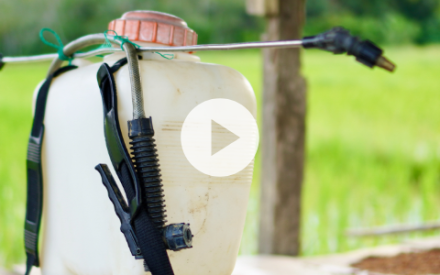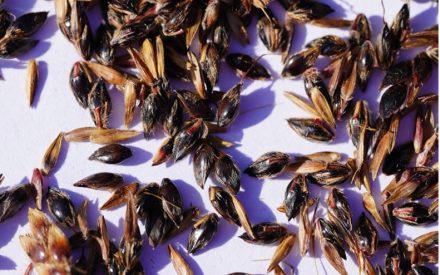On September 12, 2024, the Wisconsin Extension Weed Management Team held a workshop at the Arlington Research Station. This was a full day workshop featuring multiple speakers, hands-on demonstrations, a weed knowledge contest, and sponsor exhibits. The event was well attended with 89 participants from across Southern Wisconsin and Northern Illinois. The keynote speaker was Dr. Tommy Butts, Assistant Professor of Weed Management at Purdue University. Other speakers included Dr. Rodrigo Werle and the WiscWeeds Team and Dr. Mark Renz from the Plant and Agroecosystem Sciences Department at UW-Madison, and Dan Smith from UW-Madison Division of Extension Nutrient and Pest Management Program.
Navigating New Technologies for Drift and Weed Control
Our first presenter, Dr. Tommy Butts, covered conventional technology related to drift and weed control. Butts dug into the effects of spray volume, spray pressure, droplet size, and tip selection related to herbicide type. Participants found nozzle size and consequently droplet size to be the most valuable and applicable information. While surfactants help with droplet size and coverage, we learned that nozzle size/style and pressure make a much larger difference. Changing from an XR 110025 @ 60psi to a TTI11005 @ 30psi for instance reduced the percent of drift-prone fines from 25.8% to 2.8% according to data presented by Butts.
Droplet size should be tailored for canopy penetration; larger droplets are better for canopy penetration and pushing fungicide to the ear leaf while small droplets will keep the product near the top of the canopy. Butts has also conducted recent research comparing coverage from a drone application versus a ground rig. They found the drone at 5 gallons per acre (GPA) performed similarly to the ground rig at 10 GPA in coverage and weed control when spraying gramoxone; however, droplet distribution was not even across the spray swath of the drone with any combination of nozzle or carrier volume. Watch below.

 ▶ Combine Cleaning
▶ Combine Cleaning Johnsongrass in Wisconsin
Johnsongrass in Wisconsin ▶ AI in Agriculture
▶ AI in Agriculture


